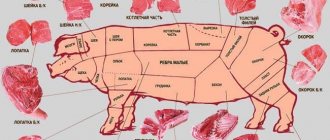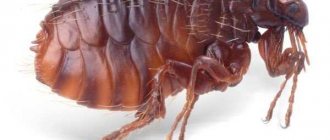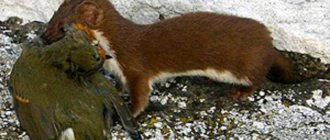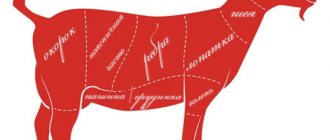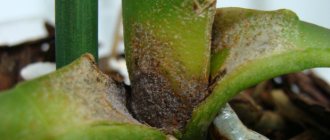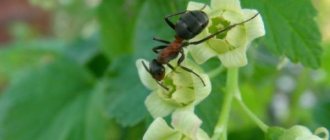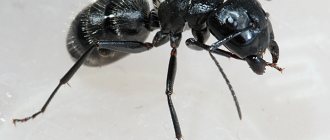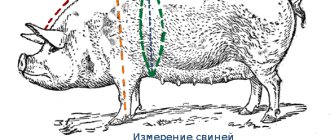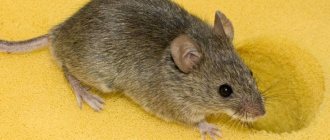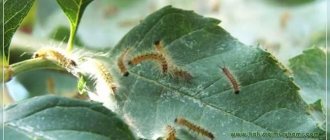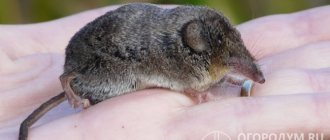In this article we will talk about how to singe a pig in different ways. The process is technically simple. But there are certain subtleties and tricks in this matter, which are simply necessary to study in order to obtain a high-quality result. The skin of the pig is burned to remove the tough bristly surface and extend the shelf life of the meat and lard. In addition, thick skin during such primary heat treatment becomes softer and tastier.
Why do you need to scorch?
It is necessary to singe a pig correctly, first of all, to rid the skin of bristles. In addition, cleaning often precedes smoking and affects the quality of the lard. If the pig is slaughtered for sale, it is necessary to singe it to give it a marketable appearance.
The choice of bristle removal partially affects the quality of the lard. If you tar a pig, the lard acquires a specific taste. It is usually advised to smoke and salt the carcass immediately after it has been seared.
Theoretically, a young piglet can be left with bristles, and during cooking you can simply remove the skin. However, this will prevent you from using the pigskin. The bristly material is not suitable for dressing and processing, and it is almost impossible to get rid of hair on a skin that has already cooled down.
Useful tips for beginners
For those who are new to pig slaughter, here are some practical tips:
- A blow to the heart should not be used, since this method is more suitable for experienced slaughterers. The point is that you need to know exactly where to stick the knife. For beginners, a hit to the neck is more suitable.
- It is recommended to stun the pig before slaughter.
- For better bleeding, the carcass should be hung on a hook. Remember that blood spoils the taste of meat because it gives it an unpleasant aftertaste.
Before you start slaughtering a pig, you need to thoroughly prepare and take into account all the nuances of this process. An injured and wounded animal not only suffers, but also becomes very aggressive, and the picture of a person running after a bloody creature causes only horror and disgust. In this regard, it is also worth taking care of the moral aspect of the procedure.
Stubble removal methods
If you decide to use leather, you need to choose how to remove the stubble. The most convenient and accessible method is chosen. It is recommended to get rid of stubble using one of 4 methods:
- straw, wood chips;
- gas burner;
- blowtorch;
- scalding.
Each method has its own disadvantages and advantages. However, in each case it is necessary to be careful and pay attention to the process. This plays a decisive role. It is important not to dry out the skin using fire and not to cook the carcass by removing the bristles with water.
There are alternative methods - cleaning the hide with chemicals. However, it is not recommended to do this at home. In addition, it is worth remembering the harmfulness of such methods.
Singing a pig is not enough. It is necessary to scrape off soot and burnt bristles. Usually a scraper, a knife, or a blade are used. Alternative methods - a hard brush and sandpaper are not effective enough; after the process, most of the bristles and soot remain.
Important! Properly tarring a piglet is especially important for farmers who do not use the services of slaughterhouses. Some slaughterhouses give the owner a fully prepared, dressed carcass.
Preparation for slaughter
In order for the slaughter to proceed without problems and the meat not to lose its qualities, you need to pay attention to proper preparation:
- If a boar needs to be castrated, this must be done at least 2 months before slaughter. If this is not done or the required period after castration is not maintained, the meat will be tough and smell unpleasant. No subsequent treatments will help get rid of this smell.
- Animals should not be fed 12 hours before slaughter, and should not be given water 3 hours before slaughter. This is necessary so that the animal’s intestines are completely cleaned and the meat cannot be stained with feces during the cutting process. In addition, it will be easier to lure a hungry animal out of the pen - it will follow any bait.
- The animal should not be dirty before slaughter. Inadequate living conditions and poor care can result in the pig becoming covered in a layer of dried mud. This also happens when the animal has been kept in too small a space. If this happens, the pigs are washed before slaughter. A large number of microorganisms on the skin contributes to the fastest spoilage of meat.
- When meat is to be slaughtered for sale, a veterinary opinion is required. The specialist must issue an appropriate document confirming the health of the animal. This certificate and the result of the sanitary and veterinary examination give the right to sell meat to people.
Before slaughter, you must not frighten the animal, beat it, or show aggression. Experts believe that high levels of stress in pigs dramatically deteriorate the quality of meat. This has a completely logical explanation: fear and stress sharply release a large amount of adrenaline into the blood and this does not improve the quality of meat.
How to properly singe a pig with a gas torch
It is convenient to singe a pig with a gas burner because you can efficiently clean hard-to-reach places. An additional advantage is that you can make a gas burner for scorching pig carcasses yourself. Tarring should be done according to this scheme:
- The carcass is placed on a raised platform, preferably on its back, legs spread apart.
- Turn on the gas burner and gradually singe the skin.
- It is recommended to repeat the procedure 2 times - scorch, scrape, repeat again.
- During the process, make sure that the skin does not dry out. Bubbles of fat indicate the degree of readiness.
A gas torch for singeing pigs is safer than a blowtorch. The burner does not have the property of heating up. The disadvantage of this method is that it simply dries out the skin and singes the skin in addition to the bristles. You can ruin the top layer of lard.
Add a special aroma with smoke
Now the burner can be put aside, and the first black layer that has formed must be removed. The work can be done with the blunt side of a knife or a soft wire brush.
It is very important to prevent damage to the integrity of the skin during the singeing process.
When the bristles are completely removed, the carcass is burned “black”. Areas such as the back and legs require longer exposure to fire, but the skin on the abdomen is very delicate - the treatment of these areas should be more delicate.
The next step is to fill the tarred carcass with water. The skin became very dry under the influence of fire and, if it is not moistened, when turning the pig over, it will begin to crack. Additional moisture makes further cleaning easier.
Now turn the pig over to the other side and repeat all the steps. The legs, head, ears and tail are areas that require particularly careful singeing. Hooves can be easily removed by first warming them up with a burner flame. To avoid burning your hands, you need to wear thick household gloves.
To make the meat and lard especially flavorful, the process of preparing the carcass for cutting can be completed by scorching with straw or hay.
To do this, the pig's body is covered with a small amount of straw, which is immediately set on fire. As soon as the fire spreads across the entire surface, you need to cover it with a bag or other durable cloth. The result of this simple action is amazing. Subsequent times, when preparing meat “for yourself,” you will always “flavor” it with the smoke of straw.
How to make a gas burner for processing pigs
Not having a tool at home is a reason to make the device yourself. You can make a burner for singeing pigs with your own hands. The design includes the following elements:
- body (metal);
- nozzle;
- gearbox;
- a unit for attaching a gas cylinder;
- regulator to control fuel supply;
- gas hose;
- lever;
- flame blow-out safety device;
- head.
Detailed manufacturing instructions are demonstrated in numerous videos. Create a gas burner for pigs with your own hands according to the following scheme.
- First, the handle is made. It is acceptable to use an old soldering iron handle or unnecessary pipes. The handle should remain cold.
- Create a steel body. It is permissible to use a brass rod with a diameter of 2 cm.
- The divider is made from the same rod, with 4 holes for oxygen circulation. The lack of oxygen will make combustion impossible.
- The divider is pressed forcefully into the body. It is necessary to install an internal flange with clearance.
- They make a nozzle. A metal rod is used for this. A drill with a diameter of 2 mm makes a blind hole. A 4 mm hole is made in the jumper. They are hammered and sharpened with sandpaper.
- A gear hose (rubber or fabric) is attached to the end of the tube and secured with a clamp or screwdriver. The hose is taken from specialized materials; using improvised materials is risky.
- Then the optimal pressure in the connected gas cylinder is set.
Important! A homemade gas burner is suitable for singeing a pig in the same way as a purchased one. The difference is the level of security. The purchased model is a guarantee that the tool meets the required standards.
Homemade pork smoking
Smoking pork
at home it is produced in special smokehouses. Small smokehouses are built 2-3 meters high. Outside, at the bottom of the smokehouse, there is a stove with a pipe through which the smoke enters the smokehouse. You can also light a fire on the stone floor of the smokehouse if the foundation is also made of stone or brick. The pig meat is hung on hooks at the top of the smokehouse. A fan with a valve is installed under the roof of the smokehouse to regulate air draft. The smoke should pass freely around the meat and exit through this fan.
The best material for home smoking pork
: oak, elm, walnut, beech and juniper. Take branches and shavings, sprinkle them with sawdust and light them. The fire is started very low at first so that the meat warms up gradually. The fuel should smolder, not burn. To add flavor, add bay leaves, caraway seeds, mint, juniper twigs and berries to the fire. In winter, maintain a constant fire until the end of smoking, so that the heat is uniform. In spring and summer, the smokehouse is heated every other day or two.
Before smoking pork at home, meat or ham is removed from the brine, doused with warm water, brushed to remove films and hung for 1-2 days to dry. In the smokehouse, the meat and hams are hung below the fan and so that the pieces do not touch each other. To prevent pork hams from getting dirty with soot, they are sprinkled with pea flour or bran through a sieve before hanging. Can be loosely wrapped in straw.
Homemade ham smoking
in cold smoke lasts 2-4 weeks, depending on the size.
In warm smoke 5-8 days. Sausages in cold smoke for 1-3 days, in hot smoke for 1-3 hours. To smoke pork in hot smoke, hang the meat closer to the fire. Salting bacon
or subcutaneous lard. In some vessel, pour a finger-thick layer of good white salt and place layers of lard on it, skin side down, first rubbing them with salt. The same layer of salt is poured on top of the lard, lard is added on top of it again, etc. After two weeks, the pieces are transferred, the top ones are placed down. Salting of bacon lasts from 1 to 2 months at a room temperature of + 1° D° + 5° Reaumur. You should not overcook the lard, otherwise it will begin to turn yellow and become bitter. When pouring layers of lard with salt, do not skimp on salt, since lard cannot be over-salted. Saltpeter is not used when salting bacon.
After salting is complete, the bacon is hung in a cool place to dry. At the same time, it becomes harder. Salted lard can be smoked in cold smoke.
How to singe a pig or pig with straw
Singing a pig with straw is considered a crude but simple method to treat the carcass. Some recommend using this method only when preparing a carcass for yourself, and tarring piglets for sale using other methods.
- The carcass is placed on the ground. A heat-resistant table is suitable, but the ground is more convenient; removing ashes and scraping stubble will be more convenient in an unlimited space.
- Cover the side with straw and set it on fire. You should watch the combustion. Strong flames should be put out with burlap.
- The ashes from the burnt straw are removed along with the burnt bristles. It is advisable to use additional tools.
- Turn the carcass over and repeat the steps. It is important to place the straw evenly on both sides of the pig.
Properly singeing a pig with straw is quite simple. If necessary, straw is replaced with thin aspen chips. Scorching a pig with wood chips is faster than scorching with straw due to the high temperature of the fire. Soot and bristles should be scraped off carefully using a scraper. Some people recommend scrubbing with a stiff brush, but this method is ineffective.
Pork carcass cutting
To cut the carcass, you will need a table or a flat surface that will be convenient to work on.
It is important to observe basic sanitary standards and ensure the cleanliness of the tools used and the product itself. When all the tools and the workplace are prepared, you can begin the internal work
It includes the following actions:
First of all, you need to make an incision along the sternum line and remove the layer of fat on which the nipples are located. The sternum itself must be carefully cut with a small hatchet or knife - only then will it be possible to open it. If a pig was killed with a knife in the heart, then only at this stage can the blood be drawn out from the sternum. The heart and lungs are so close to each other that they have to be pulled out together
Then they are carefully separated from each other. The heart must be cut open and all blood clots removed.
The thoracic cavity is separated from the peritoneum by the diaphragm - it is removed. Next up is the peritoneum. The stomach, intestines, liver and spleen are removed very carefully. The gall bladder is firmly attached to the liver; it must be removed with all precautions so that it does not burst and saturate the meat with its bitter contents. Guts are sometimes used to stuff sausages. In this case, they need to be washed with plenty of cold water (hot water will make them wrinkle and become unusable). The boar's genitals are removed; in females, the sebaceous-muscular layer on the peritoneum is simply cut off. After this, you need to remove the internal fat, which is located inside the abdominal cavity. Also, very often, kidneys are also removed along with this fat; sometimes they may not be noticed in its thickness. Another important thing is to carefully remove the bladder without piercing it or spilling the contents. After this, the empty chest and abdominal cavity are washed with a sufficient amount of cool water and wiped dry with clean napkins. Once gutting is complete, you need to separate the legs at the lower joints. At the end, the carcass is divided into 2-4 parts and left for several hours to allow the meat to rest. During this time, a steamy smell comes out of it. After this, you can start cutting into the necessary parts - it is very difficult to chop fresh meat correctly.
How to tar a pig or pig with a blowtorch
The blowtorch method is similar to the gas torch method. The difference is that the pig will be processed using propane.
- The pig carcass is placed on the table for convenience. It is more convenient to leave a large pig on the ground.
- Turn on the blowtorch. It is advisable to adjust the temperature before scorching the pig.
- Carefully singe the bristles, including in hard-to-reach places. Scorching will take time, you should take into account the necessary breaks, it will take longer than cleaning a pig with a gas torch.
- The carcass is turned over as needed. The ears, head, and tail are treated especially carefully.
- Some people advise doing tarring twice, cleansing the skin as thoroughly as possible.
It must be remembered that the blowtorch gets hot. You will need to take breaks from working; some blowtorches explode due to overheating. The process will take longer than if you scorch with straw or a gas burner. The advantage of a blowtorch is the ability to process the pig more thoroughly than with other methods.
It is advisable to scrape the skin with a blade, scraper, or knife. But it is important to remember that the skin should not be damaged. You should not overdry the skin; you should also not singe it to the point of charring the skin.
Important! A blowtorch and gas burner make it possible to process the carcass deeply, adding aroma and flavor to the meat. Tarring with straw is convenient, but it will be difficult to scorch deeply.
How to singe a pig to add flavor
After removing the bristles, it is recommended to do an additional roasting, which gives the lard and meat a specific aroma.
- The carcass, devoid of bristles, is burned until it turns black. The back and legs are treated longer than the skin of the abdomen.
- Pour water over the skin, making it softer and more elastic. Firing makes the skin fragile, hard, brittle.
- Turn the carcass over and repeat the procedure. The pig should be evenly burned, otherwise the aroma and taste will be different in different pieces.
- The hooves are removed by heating with a burner flame. Remove using gloves to prevent burns.
The result is aromatic lard, meat ready for smoking and salting. It is permissible to freeze raw materials, make minced meat, and use them at your own discretion.
Features of cutting
A lot of information can be found on how to quickly slaughter a pig and cut it up correctly.
But if this is being done for the first time, then it is better to call a specialist so that he can point out the intricacies of the work. After the animal is slaughtered, the carcass is cut up. And the first thing they do is bleed. If it is in a suspended state, then wait until the blood has completely drained into a clean container provided. When the pig is slaughtered and not hung, the blood is drawn from the open peritoneum with a mug or ladle and poured into some kind of container. After the carcass is drained of blood, it is thoroughly wiped from the inside with rags. Washing with water is not recommended as this may damage the product.
The carcass is processed in several ways. It depends on the materials at hand and the purpose of the skin. It can be removed, or it can be scorched.
Searing is done with straw or a blowtorch. If you want the lard to have a specific aroma and be more tasty, then use straw for singeing.
The diet for fattening pigs can be read in this article.
Singing with straw
The pig carcass should be placed on a dense layer of dry straw and covered with it from the sides and top. The straw is set on fire. If, when dry rye, wheat or barley stalks are burned, some areas remain with bristles, you can go over them again with a blowtorch. Then the carcass is cleaned of ash and burnt bristles.
After singeing, either with straw or with a blowtorch or gas torch, they begin to scrape off the top layer of the skin, after wetting the areas of the carcass with hot water. The color of the skin will depend on how the bristles were removed. After scorching with straw it will have a slightly brownish color, after a blowtorch or burner it will be white. However, the latter also depends on the breed of the animal. For example, a Belarusian Black-and-White carcass will have the same skin color. However, like the North Caucasian or Ukrainian steppe pockmarked.
A description of fattening piglets for meat at home is described in this material.
Carcass cutting
At slaughterhouses, carcasses are cut up in a hanging state. Then the muscles and tissues are tense, and this allows you to cut the meat quickly and easily. But if this is not possible, then the carcass is gutted on a special flooring. The process occurs in the following sequence:
They cut off the head. This makes it possible to completely get rid of blood; The “apron” is cut out - that is, the fat and muscle layer on the belly; The belly is cut, starting from the chest and to the anus; Immediately remove the intestines and stomach, kidneys
An assistant can immediately remove the fat from them, and then wash the contents from the intestines under running water and put them in a separate container; After the liver is removed, the gallbladder should be separated from it with extreme care; After cutting out the diaphragm, the lungs and heart are removed. The heart muscle is cut and the resulting blood clots are removed; They wipe the inside of the carcass with a rag, separate the legs at the joints, and the head (some butchers prefer to separate the head at the beginning of the cutting process)
And then they cut it into two parts along the ridge; The half-carcasses are given time to cool slightly and dismembered according to the desired pattern. Usually six pieces; First, remove the fat and skin with a sharp knife. Front legs with shoulder blades (shoulders with ribs), hind legs with thigh (ham), neck, sternum, loin. In the area of the ham and loin, the fat is thicker and is removed in large layers. It is thinner on other parts of the carcass. To prepare salted bacon, lard from the top and sides is more suitable. To obtain rendered fat (lard), kidney intestinal fat, as well as thin lard, is used.
Culinary cutting
There are several cutting methods. It all depends on the qualifications of the butcher. The most popular methods for cutting a pig carcass:
- American. The half carcass is divided into five parts (shoulder, back, front and rear ham, side);
- English. The head is cut off, and the carcass is cut along the spine and divided into front, middle and back parts;
- German. The half carcass is divided into 8 parts. The cutting is similar to the American method, but the parts are increased by cutting the back section;
- Moscow (Russian, Soviet). The half carcass is divided into the following parts: shoulder, loin, rump, ham, brisket, neck.
Cutting up suckling pigs
A very simple procedure and does not require the intervention of a professional butcher. Everything can happen right in the kitchen. They kill with a blow to the neck and let the blood drain. They scorch over a gas burner and carefully remove the ash from the skin using a knife and hot water. Then they cut open the belly and take out the internal organs. To ensure that the pig is well-fried, small cuts are made in the pelvis and shoulder blades.
The monthly weight of Vietnamese piglets is described at this link.
Removing stubble using scalding method
Removing piglet bristles by scalding is only possible on freshly killed animals. If singeing can be carried out at any time while the pig is still warm, then scalding must be started immediately.
- Prepare a vat of hot, not boiling water. The volume depends on the size of the pig.
- The carcass is lowered using ropes.
- The piglet is constantly turned with a rope attached. The entire skin should be soaked evenly.
- After waiting for the skin to soften (the bristles should come off easily), the carcass is removed.
- Scrape off the bristles with a scraper or blade. Tools should be kept sharp, free of rust and damage.
- Places where separation is poor are watered with hot water several times as needed. It is prohibited to use boiling water.
The scalding method is often used when the carcass is not planned to be salted or smoked in the future.
Important! Ridding a piglet of stubble is not a mandatory procedure, only desirable. It is necessary to remove the bristles if you plan to further use the skin.
Which animal is not subject to slaughter?
There are a number of cases where it is not recommended to slaughter animals for a period of time. Let's look at when doing this is strictly prohibited:
- The pig is in heat. It is necessary to temporarily postpone the slaughter. During this period, meat has an unpleasant taste and odor that cannot be eliminated. This is a temporary phenomenon and its explanation is simple: during the hunting period, the females have a very high concentration of sex hormones in their bodies. In order for this period to pass successfully, it is recommended to wait 7-14 days. If the animal has decreased or completely lost its appetite, behaves aggressively, restlessly and often grunts, this may mean hunting, which means that slaughter should be temporarily abandoned.
- The animal showed alarming symptoms, indicating the onset of some kind of disease. It is forbidden to slaughter such animals; you must first accurately diagnose and cure the disease, then wait the necessary time and only after that allow them to be slaughtered. Sometimes it is even necessary to dispose of sick animals - when it is some kind of dangerous and incurable disease. In such cases, it is strictly forbidden to eat meat; carcasses must be destroyed. The sick animal is apathetic, has no appetite, motor activity is reduced to a minimum, and uncharacteristic discharge may be observed. The veterinarian must examine the entire pig population, isolate patients and prescribe treatment.
- The animal has undergone vaccination or treatment. In order for the meat to be eaten without problems after these manipulations, at least 2-3 weeks must pass. This applies to the course of treatment with antibacterial or anthelmintic drugs. Throughout this period, harmful substances can remain in the meat, after which they are safely eliminated from the body.
Boar slaughter
The wild boar, unlike the female and the pig, is highly aggressive. It is very difficult to slaughter this fierce beast. As a rule, 4 killers should take on the job. The slaughtering technology process is identical to the above technique. The boar is knocked down and secured.
Often the task cannot be completed the first time, and the process develops into a kind of hunt for the beast. For this reason, many pig farmers prefer standing slaughter. The slaughterer carefully stands close to the animal and makes a sudden, very strong blow to the area of the left shoulder blade, and it is under it that you need to stab. In a matter of seconds, the boar's death occurs.
Method with cutting the carotid artery and jugular vein
- This procedure is easy to handle on your own. Place a trough of food in front of the pig to distract the animal.
- While the pig is eating the food, tie its back legs with a rope.
- Using the crossbar near the butchering area, throw the rope over the crossbar. Pull up the carcass until the animal hangs in an upright position or at a height convenient for you.
Important! If the pig is large, then most likely you won’t be able to hang it on your own, then you can slaughter it in several ways while it is eating, cut the neck at the junction of the head and body, while throwing it on its side, while holding its tied legs with ropes .
- If you manage to hang the pig, give it time to hang for a while to calm it down. Then, on both sides of the neck (sides), cut her carotid artery. How to do this correctly is shown in the video below.
